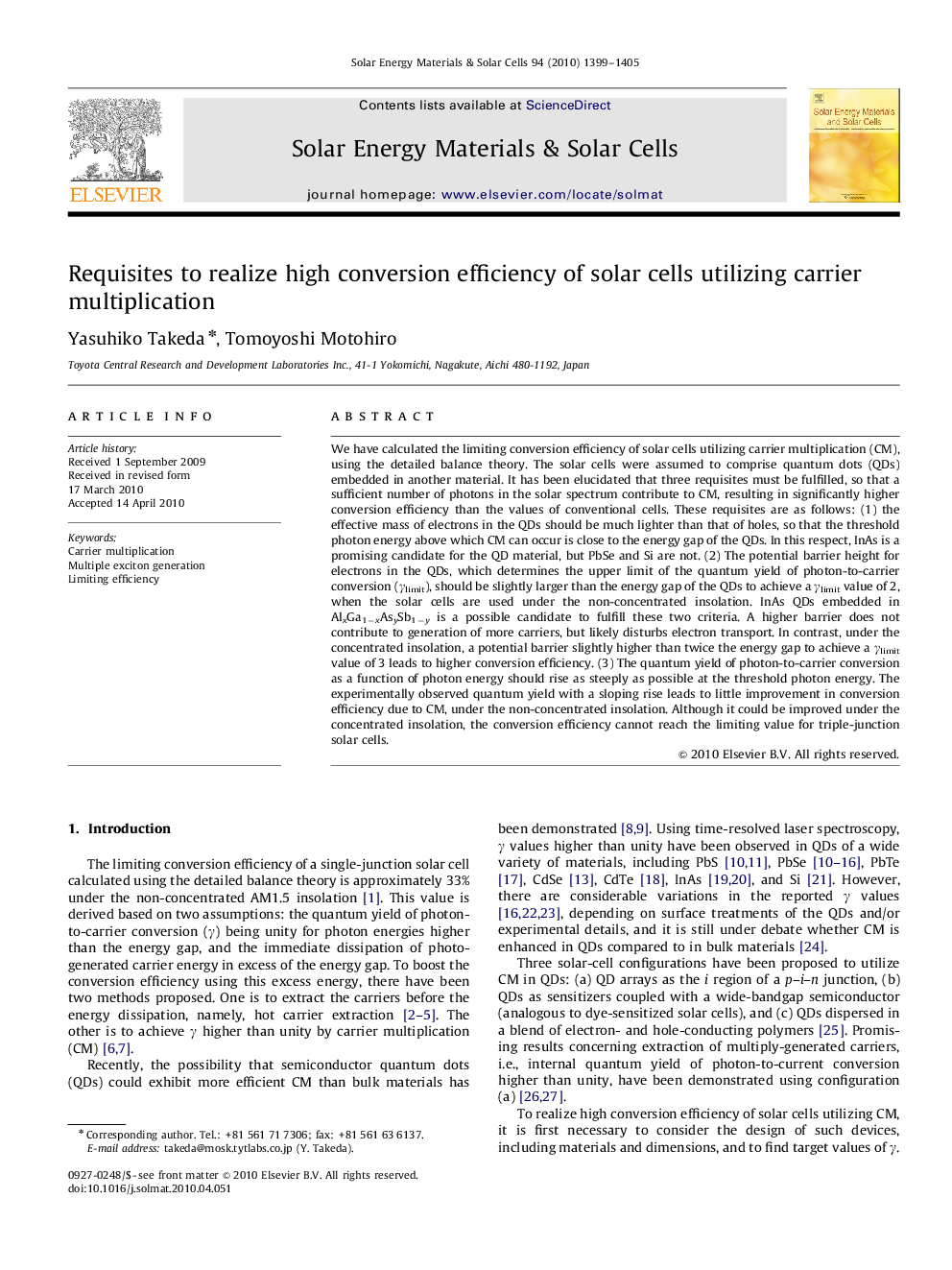| Article ID | Journal | Published Year | Pages | File Type |
|---|---|---|---|---|
| 79689 | Solar Energy Materials and Solar Cells | 2010 | 7 Pages |
We have calculated the limiting conversion efficiency of solar cells utilizing carrier multiplication (CM), using the detailed balance theory. The solar cells were assumed to comprise quantum dots (QDs) embedded in another material. It has been elucidated that three requisites must be fulfilled, so that a sufficient number of photons in the solar spectrum contribute to CM, resulting in significantly higher conversion efficiency than the values of conventional cells. These requisites are as follows: (1) the effective mass of electrons in the QDs should be much lighter than that of holes, so that the threshold photon energy above which CM can occur is close to the energy gap of the QDs. In this respect, InAs is a promising candidate for the QD material, but PbSe and Si are not. (2) The potential barrier height for electrons in the QDs, which determines the upper limit of the quantum yield of photon-to-carrier conversion (γlimit), should be slightly larger than the energy gap of the QDs to achieve a γlimit value of 2, when the solar cells are used under the non-concentrated insolation. InAs QDs embedded in AlxGa1−xAsySb1−y is a possible candidate to fulfill these two criteria. A higher barrier does not contribute to generation of more carriers, but likely disturbs electron transport. In contrast, under the concentrated insolation, a potential barrier slightly higher than twice the energy gap to achieve a γlimit value of 3 leads to higher conversion efficiency. (3) The quantum yield of photon-to-carrier conversion as a function of photon energy should rise as steeply as possible at the threshold photon energy. The experimentally observed quantum yield with a sloping rise leads to little improvement in conversion efficiency due to CM, under the non-concentrated insolation. Although it could be improved under the concentrated insolation, the conversion efficiency cannot reach the limiting value for triple-junction solar cells.
